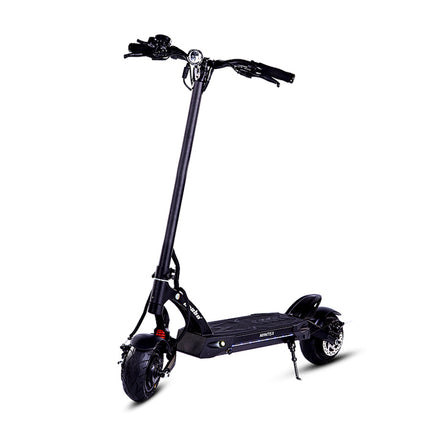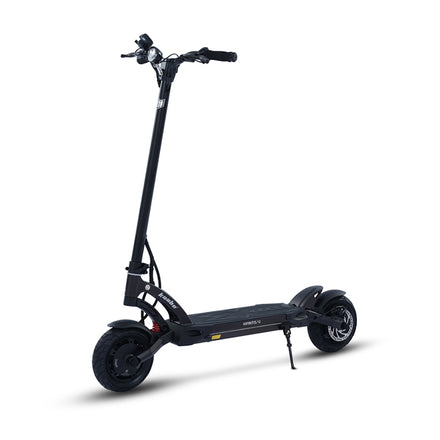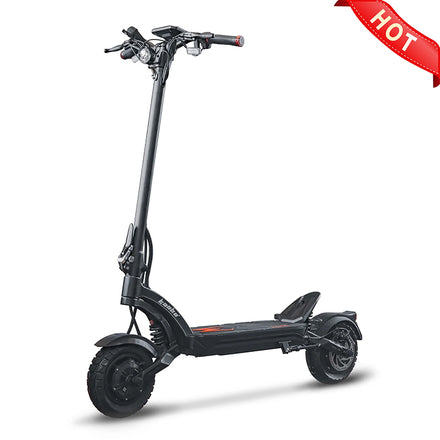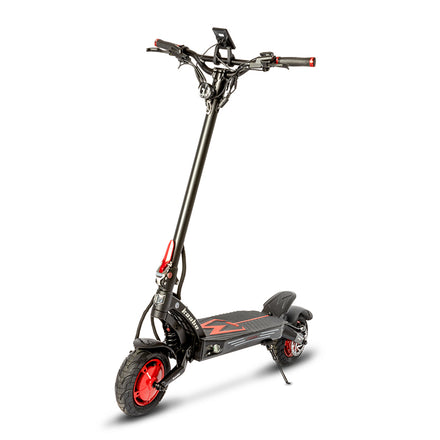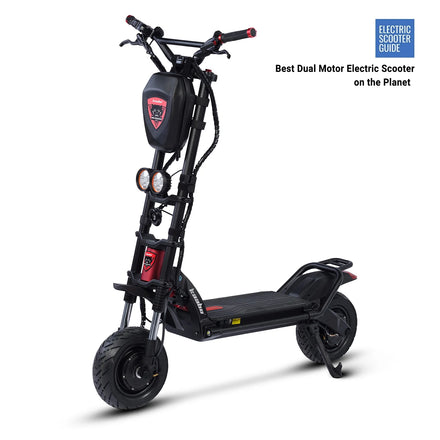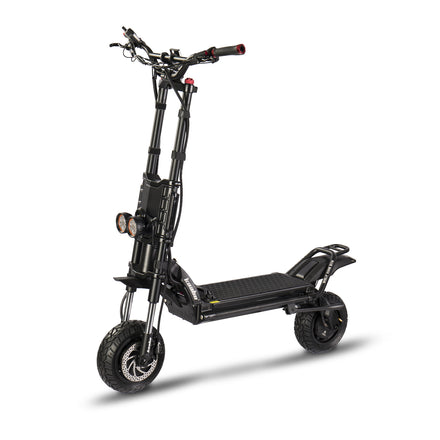Safety Tips for Riding Electric Scooters to School
Electric scooters are becoming an increasingly popular mode of transportation for students heading to school. They're fun, cost-effective, and environmentally friendly. However, like any mode of transport, there are risks involved, especially for younger riders who may not be fully aware of traffic rules and safety protocols. This blog post is dedicated to providing essential safety tips and best practices for students using electric scooters to school, ensuring they have a safe and enjoyable ride every time.
Why Choose Electric Scooters for School Commutes?
Electric scooters have rapidly gained traction as a convenient mode of transportation for short distances. They're lightweight, portable, and can significantly cut down on commute time. Moreover, with increasing traffic congestion in urban areas, electric scooters offer a way to bypass gridlock, making them an appealing choice for students.
But why exactly are they becoming so popular?
- Environmentally Friendly: Electric scooters produce zero emissions, making them a greener alternative to cars and buses.
- Cost-Effective: With minimal maintenance costs and no need for fuel, electric scooters are a budget-friendly choice for students.
- Convenient and Quick: Scooters can navigate through narrow paths and streets, reducing commute time significantly.
- Health Benefits: Riding a scooter requires balance and coordination, promoting physical activity among students.
Understanding the Risks of Riding Electric Scooters to School
While electric scooters offer numerous benefits, they also pose certain risks, especially for younger, inexperienced riders. Some of the common risks include:
- Lack of Experience: Younger students may lack the necessary experience to navigate through traffic safely.
- Distracted Riding: Using mobile devices or listening to music while riding can distract students and lead to accidents.
- Poor Road Conditions: Uneven pavements, potholes, and debris can cause a scooter to lose balance.
- Inadequate Safety Gear: Many students fail to wear proper safety gear, increasing the risk of serious injuries in case of falls or collisions.
Essential Safety Gear for Electric Scooter Riders
Wearing the right safety gear is crucial to minimizing injuries in case of accidents. Here's a list of essential safety gear every student should wear while riding an electric scooter:
-
Helmet: A certified helmet is the most crucial piece of safety gear. It protects the head from severe injuries in the event of a fall or collision. Look for helmets that meet safety standards such as CPSC, ASTM, or Snell.
-
Knee and Elbow Pads: These pads help protect against scrapes and fractures, especially for younger riders who are still developing their riding skills.
-
Wrist Guards: In case of a fall, students often extend their hands to protect themselves, increasing the risk of wrist injuries. Wrist guards provide support and reduce the risk of fractures.
-
Reflective Clothing and Accessories: Visibility is key when riding, especially in low-light conditions. Reflective clothing and accessories like vests, tape, or even scooter lights ensure that students are visible to drivers.
-
Proper Footwear: Closed-toe shoes with non-slip soles provide better grip on the scooter deck and prevent foot injuries.
Rules of the Road: Understanding Traffic Laws and Regulations
To ride safely to school, students must understand and obey traffic laws and regulations. Here are some critical rules to follow:
- Obey Traffic Signals: Just like cars, scooters are required to obey all traffic lights and signs. Riders should stop at red lights and pedestrian crossings.
- Ride in Designated Lanes: Many cities have specific lanes for scooters and bicycles. It's essential to stick to these lanes to avoid collisions with pedestrians and vehicles.
- Avoid Riding on Sidewalks: Sidewalks are for pedestrians. Riding on them can lead to accidents and is often against the law.
- Use Hand Signals: If turning, riders should use hand signals to indicate their intention to other road users.
- Be Aware of Your Surroundings: Constantly scan the road for potential hazards, such as cars pulling out of driveways or pedestrians crossing.
Best Practices for Riding Electric Scooters to School
Adopting some best practices can make a significant difference in how safely students ride their scooters to school. Here are some tips:
1. Pre-Ride Check
Before setting off, it's essential to check that the scooter is in good working condition. This includes:
- Brakes: Ensure both front and rear brakes are functioning correctly.
- Tires: Check for proper inflation and any signs of wear or damage.
- Battery: Make sure the scooter is fully charged, especially for longer commutes.
- Lights and Reflectors: Test all lights and reflectors to ensure visibility.
2. Plan Your Route
Choose a route with less traffic and smoother roads to avoid potential hazards. Use bike lanes or scooter-friendly paths whenever possible. Avoid routes with heavy vehicular traffic or poor lighting.
3. Ride Defensively
Defensive riding involves anticipating potential hazards and acting accordingly. This includes:
- Keeping a safe distance from other vehicles.
- Avoiding blind spots, especially near larger vehicles like buses and trucks.
- Being extra cautious at intersections and pedestrian crossings.
4. Avoid Distractions
Riding a scooter requires full attention. Avoid using mobile phones or listening to music while riding. Stay focused on the road to anticipate and respond to any sudden changes.
5. Adhere to Speed Limits
Excessive speed is a common cause of scooter accidents. Students should stick to speed limits, especially in school zones and residential areas. Riding at a moderate speed allows more time to react to potential hazards.
Maintenance Tips for Electric Scooters
Maintaining an electric scooter ensures it remains safe and reliable for daily commutes. Here are some maintenance tips:
- Regularly Inspect Brakes and Tires: Worn-out brakes or tires can significantly increase the risk of accidents. Check and replace them as needed.
- Keep the Battery in Good Condition: Avoid overcharging the battery. Store the scooter in a cool, dry place to prevent battery degradation.
- Clean the Scooter: Dirt and debris can affect the scooter's performance. Clean it regularly, especially after riding in wet or muddy conditions.
- Check for Loose Parts: Regularly inspect the scooter for any loose screws or bolts that could affect its stability.
The Importance of Awareness and Training
While having the right gear and following traffic laws are crucial, rider awareness and training can make a world of difference. Schools and parents should consider providing:
- Scooter Safety Workshops: These can educate students on the basics of scooter safety, including traffic laws, proper riding techniques, and emergency response.
- Hands-on Training: Practical sessions in a controlled environment can help students gain confidence and improve their riding skills.
Electric Scooter Safety Checklist
Here’s a handy checklist for students to use before heading out on their scooters:
- Wear all necessary safety gear (helmet, pads, etc.).
- Check scooter brakes and tire condition.
- Ensure the scooter battery is fully charged.
- Test lights and reflectors.
- Plan and familiarize yourself with the safest route to school.
- Be aware of weather conditions; avoid riding in heavy rain or snow.
- Review traffic rules and hand signals.
Common Mistakes to Avoid While Riding
Even with the best intentions, students can make mistakes that compromise their safety. Here are some common errors to watch out for:
- Not Wearing a Helmet: Helmets are the most crucial piece of safety gear. Skipping this could lead to severe injuries.
- Riding Double: Electric scooters are designed for one person. Carrying another passenger can throw off balance and increase the risk of falls.
- Ignoring Road Conditions: Wet, icy, or uneven surfaces can be particularly hazardous for scooter riders. It’s essential to adjust speed and be extra cautious in such conditions.
- Overloading the Scooter: Each scooter has a weight limit. Exceeding this can affect balance and braking.
When to Avoid Riding an Electric Scooter
Certain conditions make riding an electric scooter particularly dangerous. Students should avoid riding when:
- It’s Dark and Poorly Lit: Nighttime riding can be hazardous due to reduced visibility. If necessary, ensure the scooter has proper lighting.
- Weather Conditions Are Poor: Rain, snow, or strong winds can make riding slippery and challenging.
- Feeling Unwell or Tired: Riding a scooter requires focus and balance. It’s best to avoid riding if feeling fatigued or unwell.
Frequently Asked Questions (FAQs)
Q1: Is it legal for students to ride electric scooters to school?
It depends on local laws and regulations. Some cities have age restrictions or require a license for riding electric scooters. Always check your local traffic laws.
Q2: What’s the best type of helmet for electric scooter riders?
A helmet that meets safety standards such as CPSC, ASTM, or Snell is best. Ensure it fits snugly and comfortably.
Q3: How can I make my scooter more visible during early morning or late evening rides?
Attach reflectors, use scooter lights, and wear reflective clothing to enhance visibility in low-light conditions.
Q4: Can electric scooters be used in all weather conditions?
Electric scooters are not suitable for extreme weather conditions like heavy rain, snow, or strong winds. Wet and icy roads can be particularly dangerous.
Q5: How often should I check my scooter for maintenance?
It's a good idea to perform a quick safety check before each ride. A more thorough inspection should be done weekly, or after any long or rough ride.
Final Thoughts
Riding an electric scooter to school can be both fun and practical, but safety should always be the top priority. By understanding the risks, wearing appropriate safety gear, and following the rules of the road, students can enjoy their rides while staying safe. Remember, a little caution goes a long way in preventing accidents. So gear up, stay alert, and ride responsibly!
For more information on electric scooters, safety gear, and riding tips, visit Kaabousa. Stay safe and enjoy the ride!
Lastest Blog Post
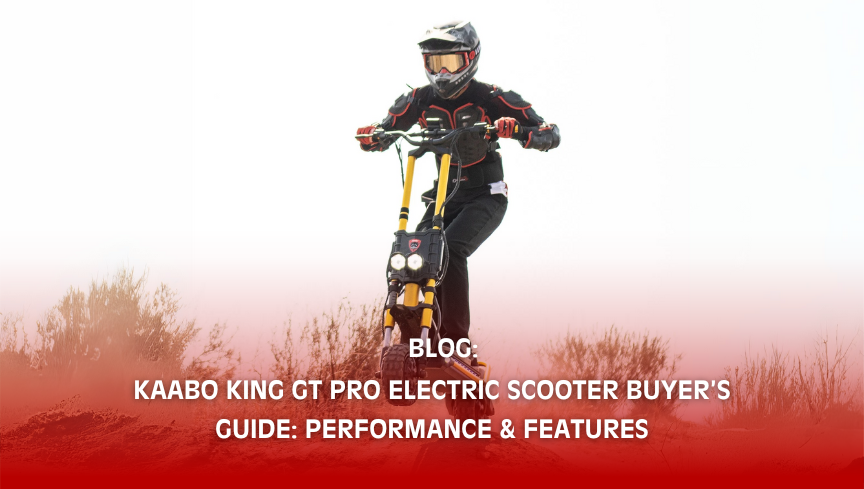

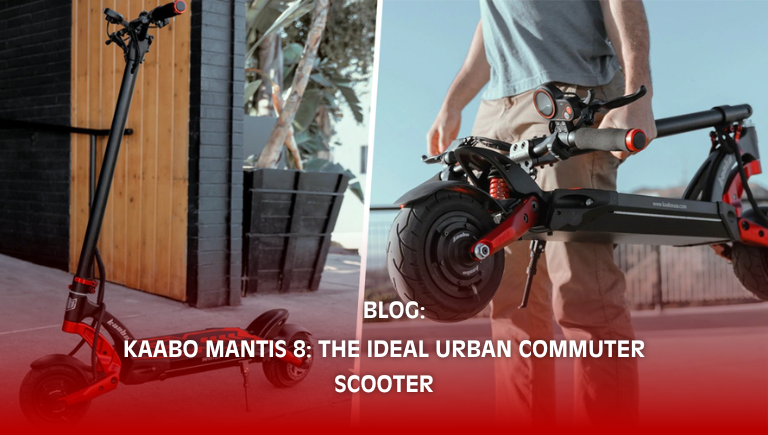

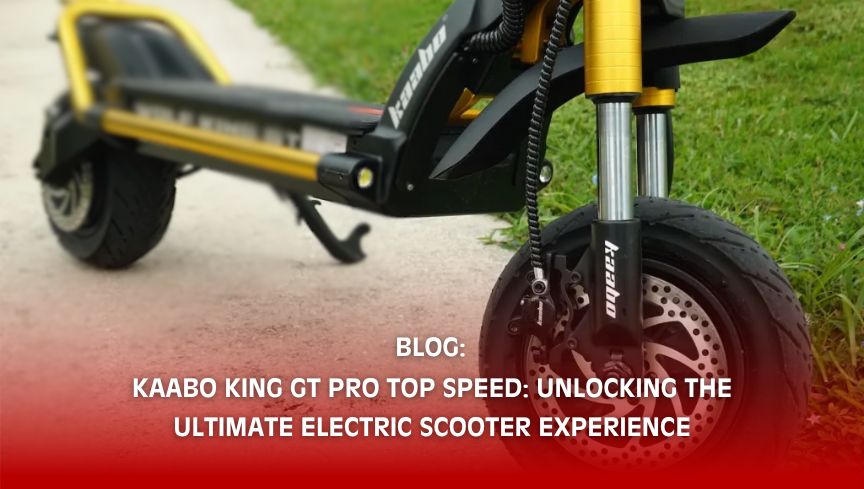

Related Product
Newletter
Promotions, new products and sales. Directly to your inbox.


